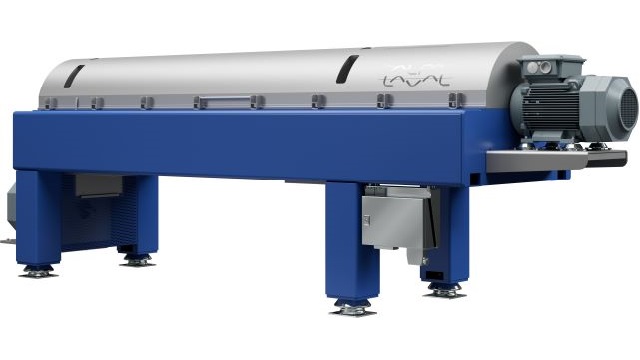ALDEC
Alfa Laval Aldec decanter centrifuges are designed for the sludge thickening and dewatering process in municipal and industrial wastewater treatment plants, with a focus on cost-efficiency, reliability, easy operation and sustainability.
Less water, lower cost
Cost-effective decanter centrifuges are crucial for removing the water content from sludge from wastewater plants, as well as from industrial waste streams. The drier the sludge, the less space it takes up and the less it weighs – both resulting in big savings on transport and disposal costs.
Choose the best solution
Conventional, ultra-reliable Aldec decanter centrifuges are ideal for sludge dewatering in all kinds of wastewater treatment facilities. They are the ideal low-tech complement to the larger-capacity, more advanced Aldec G3 units.
Big benefits
With Aldec decanter centrifuges, you benefit from low energy consumption as well as a minimum of maintenance costs, keeping dewatering costs to a minimum. They are also fully automatic, so you can keep labour costs down.
Aldec decanter centrifuges are available with capacities ranging from 2 to 95 m3/h.
Kako deluje
How do two-phase decanters work?
Learn how to improve efficiency in sludge thickening and dewatering
Separation of sludge in wastewater occurs in a horizontal cylindrical bowl with a slimline screw conveyor. The feed enters through a stationary inlet tube and is smoothly accelerated by an inlet distributor in the feed zone. Centrifugal force causes solids to sediment on the bowl wall. The conveyor, rotating slightly slower than the bowl, moves solids to the conical end. The cake exits through discharge openings into the casing. Separation takes place along the entire cylindrical bowl, and the clarified liquid exits through adjustable outlet tubes.

